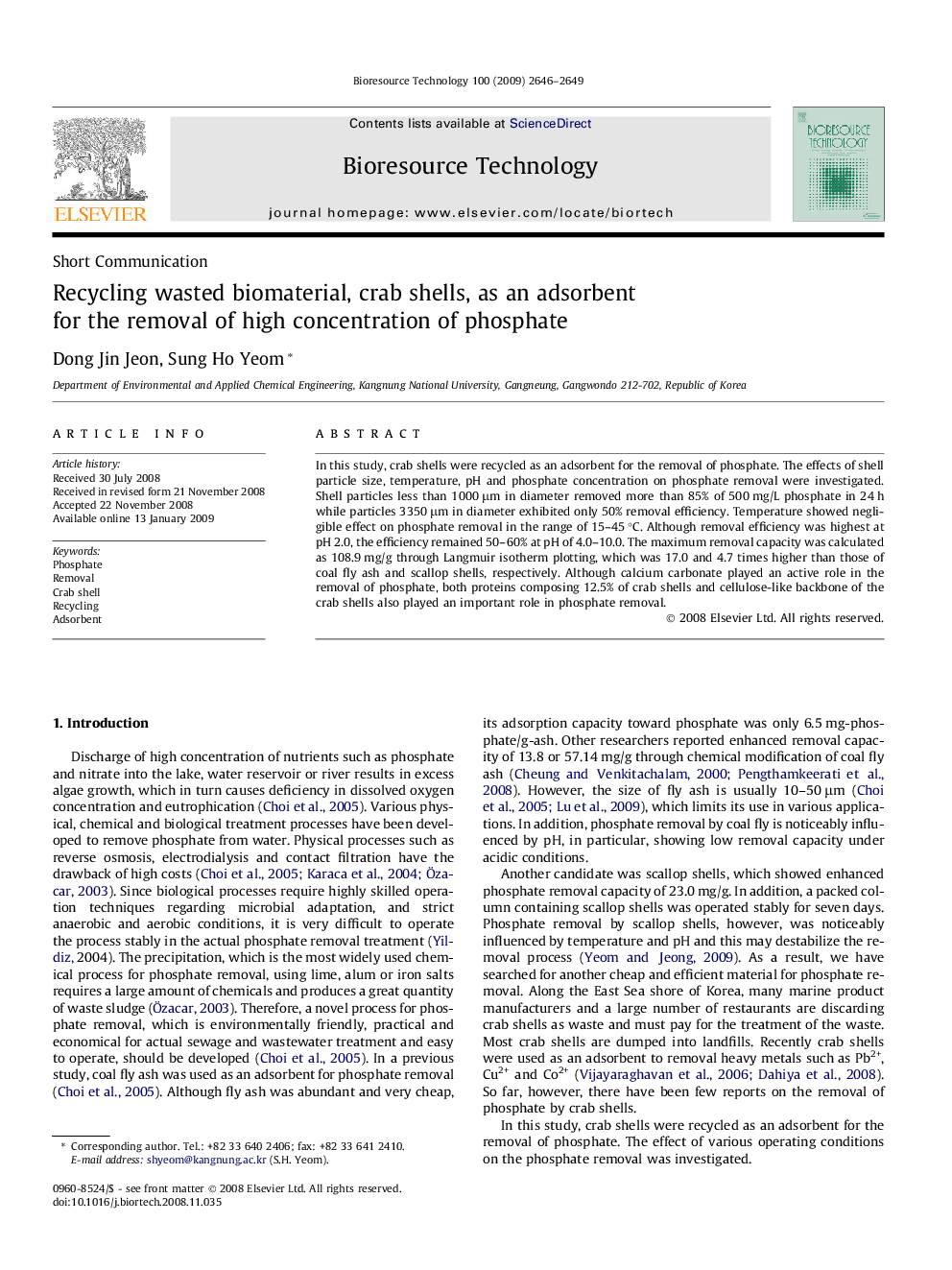| Article ID | Journal | Published Year | Pages | File Type |
|---|---|---|---|---|
| 685719 | Bioresource Technology | 2009 | 4 Pages |
In this study, crab shells were recycled as an adsorbent for the removal of phosphate. The effects of shell particle size, temperature, pH and phosphate concentration on phosphate removal were investigated. Shell particles less than 1000 μm in diameter removed more than 85% of 500 mg/L phosphate in 24 h while particles 3350 μm in diameter exhibited only 50% removal efficiency. Temperature showed negligible effect on phosphate removal in the range of 15–45 °C. Although removal efficiency was highest at pH 2.0, the efficiency remained 50–60% at pH of 4.0–10.0. The maximum removal capacity was calculated as 108.9 mg/g through Langmuir isotherm plotting, which was 17.0 and 4.7 times higher than those of coal fly ash and scallop shells, respectively. Although calcium carbonate played an active role in the removal of phosphate, both proteins composing 12.5% of crab shells and cellulose-like backbone of the crab shells also played an important role in phosphate removal.
